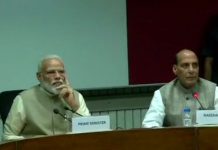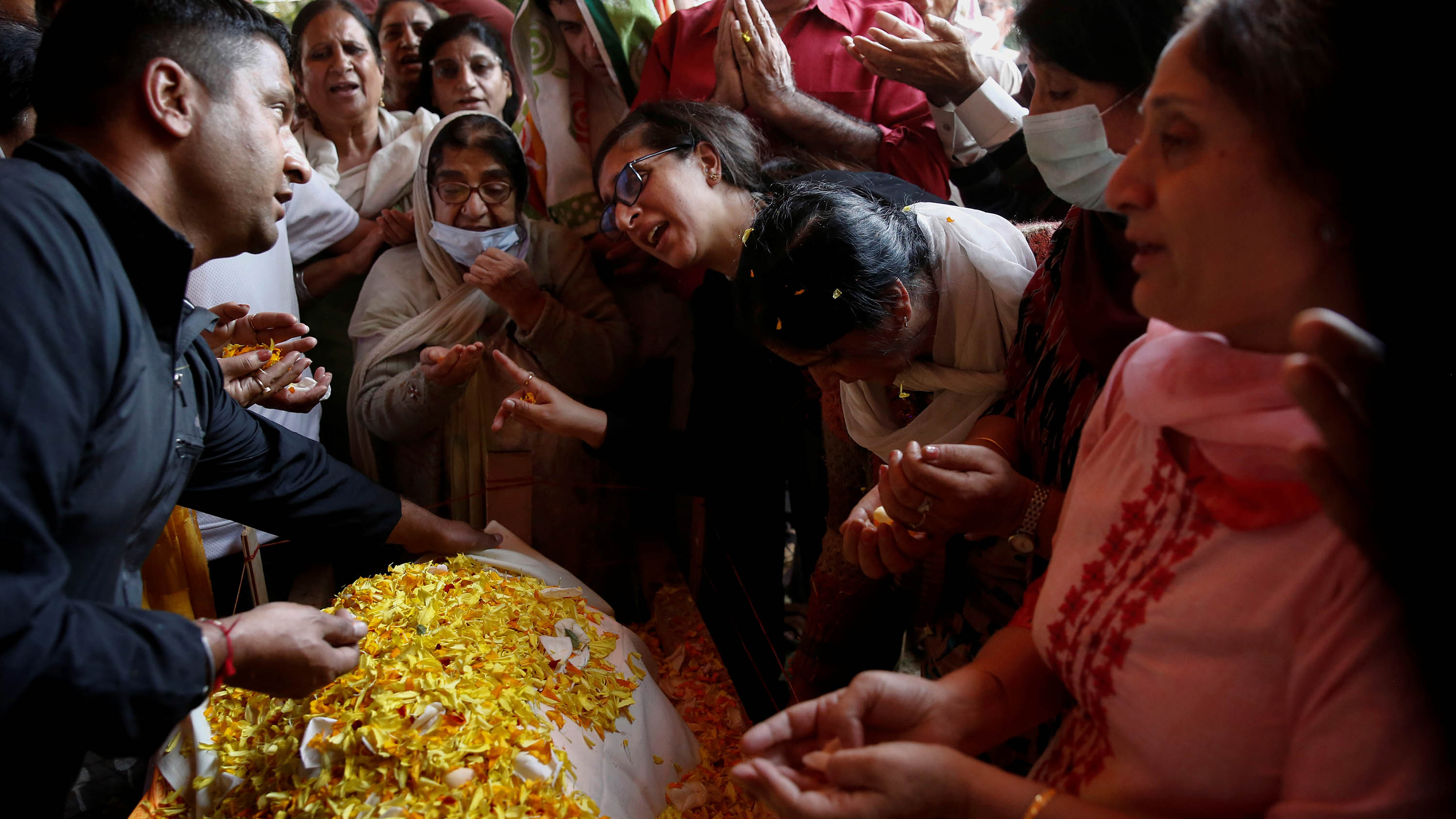
After a spate of civilian killings by militants, panic-stricken migrant workers in hundreds are leaving the Valley every day.
On the evening of October 6, Srinagar’s prominent chemist Makhan Lal Bindroo was at his clinic near Iqbal park attending to his customers when a militant sneaked in and shot him from point-blank range. Although Bindroo was rushed to the hospital, he succumbed to his injuries on the way. The killing was one of the most high-profile this year. But this was not the only reason that made it stand out. Bindroo belonged to Kashmiri Pandit community, the majority of which fled Kashmir in the early 1990s in the wake of the outbreak of the separatist insurgency. But he had refused to leave Kashmir. It was a brave decision considering Bindroo was a well-known businessman. He ran his business normally for the following thirty years and prospered. Thousands of Kashmiri Muslims visited his clinic as they trusted the quality of the medicine sold by him. But in the end, Bindroo too was consumed by the lingering conflict in the former state.
On the day, Bindroo was killed, a Hindu Bihari street vendor was also shot dead in downtown Srinagar. And the following day a Kashmiri Pandit school teacher and a Sikh woman principal were also killed. Days after, a Hindu and a Muslim Bihari street vendors were gunned down across the Valley followed after a week by the killing of two more Hindu Bihari labourers in South Kashmir.
This is when a tipping point was reached triggering the exodus of the labourers. Every day since, hundreds of migrant workers are leaving the Valley, making it the first exodus of its nature in the last three decades of the political turmoil that has so far led to the loss of over 70,000 lives. Earlier in 1990, it was Kashmiri Pandits who had fled the Valley in droves after the members of their community were targetted by the militants. This time again, the killing of Bindroo and a teacher has created a fresh reason for the remaining Kashmiri Pandits to leave the Valley, although the government is trying to stop them from doing that. But the situation remains fragile and further attacks could make it exceedingly difficult for the government to contain the fallout.
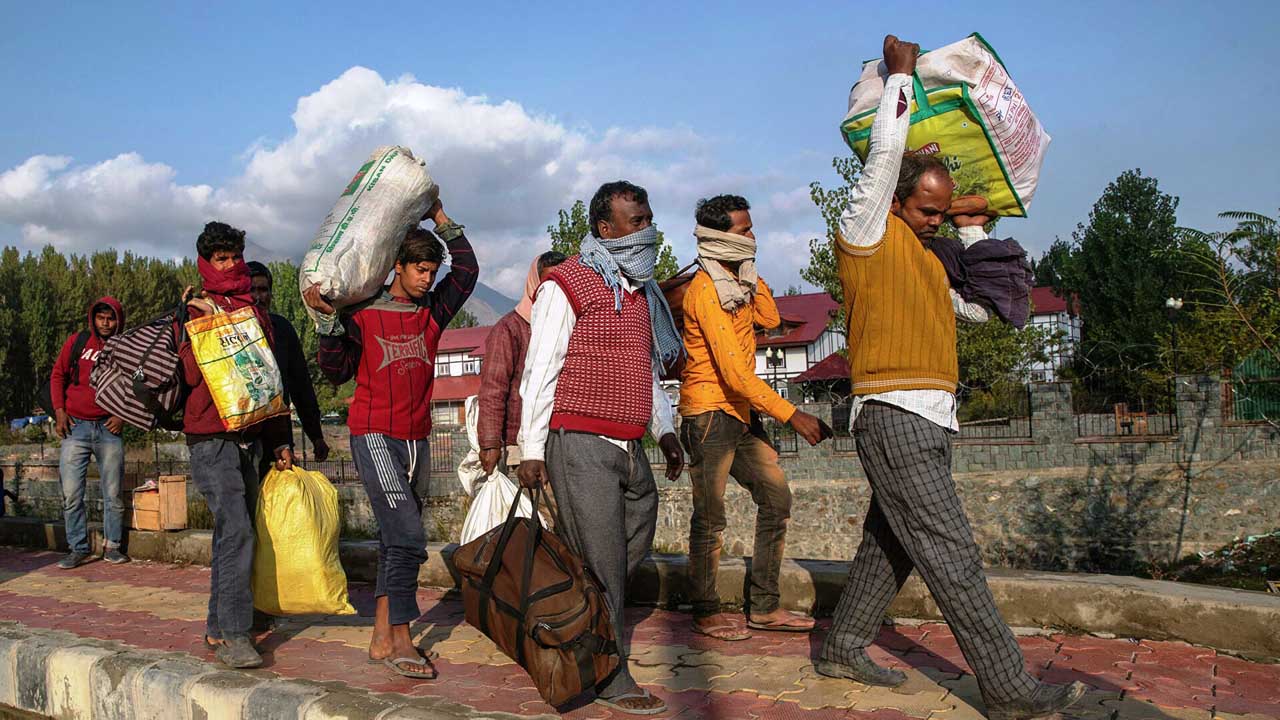
It is not that only the non-Muslims have been killed. A total of 32 civilians have been shot dead in Kashmir so far this year, 22 of them are local Muslims accused of having allegedly close connections to the security agencies or the government. In September, the militants killed a police sub-inspector Meer Arshad, a recent recruit in J&K Police in broad daylight in downtown Srinagar.
Uncertain future
Where do we go from here? It is difficult to answer this question. The government, on its part, is beefing up the security measures. Security forces detained over 700 people in the Valley in response to the killings, including those from the Kashmiri Pandit, Sikh, and Muslim communities. The government said the detained youth, most of whom hailed from Srinagar, Budgam and parts of Southern Kashmir were suspected overground workers (OGW) of the militants with some of them having links to the banned Jamaat-i-Islami.
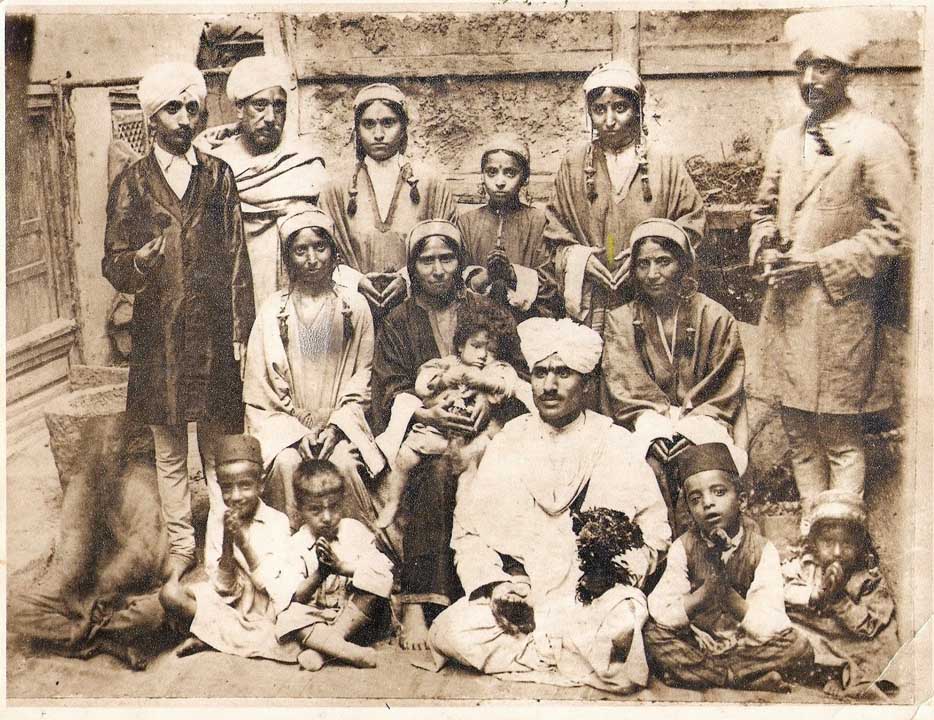
The government followed the detentions up by seizing the bikes of passersby in Srinagar. Scores of two-wheelers were confiscated to ensure that the movement of the militants suspected to be driving around on bikes was curtailed. This disrupted e-commerce, as the delivery boys couldn’t reach their destinations. There was also an order in circulation, later refuted by the police, that the non-locals in Kashmir had been asked to take shelter in security camps.
Cumulatively, these measures have created a sense of déjà vu. Suddenly, it is like yesterday once more. The uneasy peace that had held over the last two years has been broken. The government’s only way to deal with the deteriorating state of affairs is to double down on security management of the situation which, in turn, has created a siege-like atmosphere.
Population of Kashmiri Pandits
Before their exodus in the early nineties, Kashmiri Pandits formed around 2 percent of the Valley’s population. According to a research paper published on Kashmir in the late nineties by Alexander Evans, a former British deputy high commissioner to India, “some 95% of the 160,000-170,000 community left in what is often described as a case of ethnic cleansing.”
“But the small minority who remain in the Kashmir Valley may be more important in determining what kind of society Kashmir becomes,” Evans, a researcher then, wrote in his paper.
Fewer than over 3,000 Kashmiri Pandits are now in the Valley. Among them was also Bindroo. In recent years, however, the government had brought back a few thousand Kashmiri Pandits and put them up at the fortified government-built enclaves. Most of them are government employees working in different departments. If we go by the union government figures, more Pandits had started returning to the Valley over the last two years.
In July, Minister of State for Home Affairs Nityanand Rai said in a written reply to a question put to his ministry in the Rajya Sabha that over 3,800 youngsters from the community had moved back to Kashmir to take up jobs provided as part of the prime minister’s rehabilitation package. He termed it as a sign of improving situation in the Valley.
Giving figures on the numbers of Kashmiri Pandits who had fled the Valley in the nineties, the minister said that 44,167 Kashmiri migrant families are registered with the government as per the report of the Relief Office set up in 1990 by the government of Jammu and Kashmir.
“Out of these, the count of registered Hindu migrant families is 39,782,” the minister said adding that another 1,997 Kashmiri Pandit candidates were selected for jobs under the same package in April and they will be moving to Kashmir soon. Rai revealed that as many as 26,684 Kashmiri migrant youth had showed interest in returning to the Valley by applying for these jobs.
The minister said that the government had also prepared “a comprehensive policy” to provide residential accommodation to the returning Kashmiri migrants, disclosing that 6,000 residential units were being constructed for them at an “accelerated pace” and 1,000 residential units were already being used by these employees. He gave the total number of Kashmiri Pandits who had returned to the Valley as “900 families.”
But the recent killings have threatened this project. Not only the Pandits who had just returned are mulling escape, those who never migrated also want to leave. This has created a tricky situation for the union government which has been peddling a narrative that everything is hunky-dory in Kashmir following the withdrawal of Article 370 on August 5, 2019.
And there were some overt signs to this effect. As a result of a hardline security-centric policy pursued by the centre leading to jailing of the separatist leaders and the mass-scale detention of the youth, the protests and the stone-throwing have largely petered out. The seven-month siege following the revocation of Article 370 and the subsequent Covid-19 lockdowns also ensured that the lid was put on the eruption of any discontent. The government also ensured there was no public outpouring following the passing away of the top Hurriyat leader Syed Ali Shah Geelani by disconnecting the phones and the internet. Police snatched the body from the family and buried it in a nearby graveyard against the leader’s wish that he should be buried in Srinagar’s ‘Martyrs Graveyard.’
Militancy: Alive and kicking
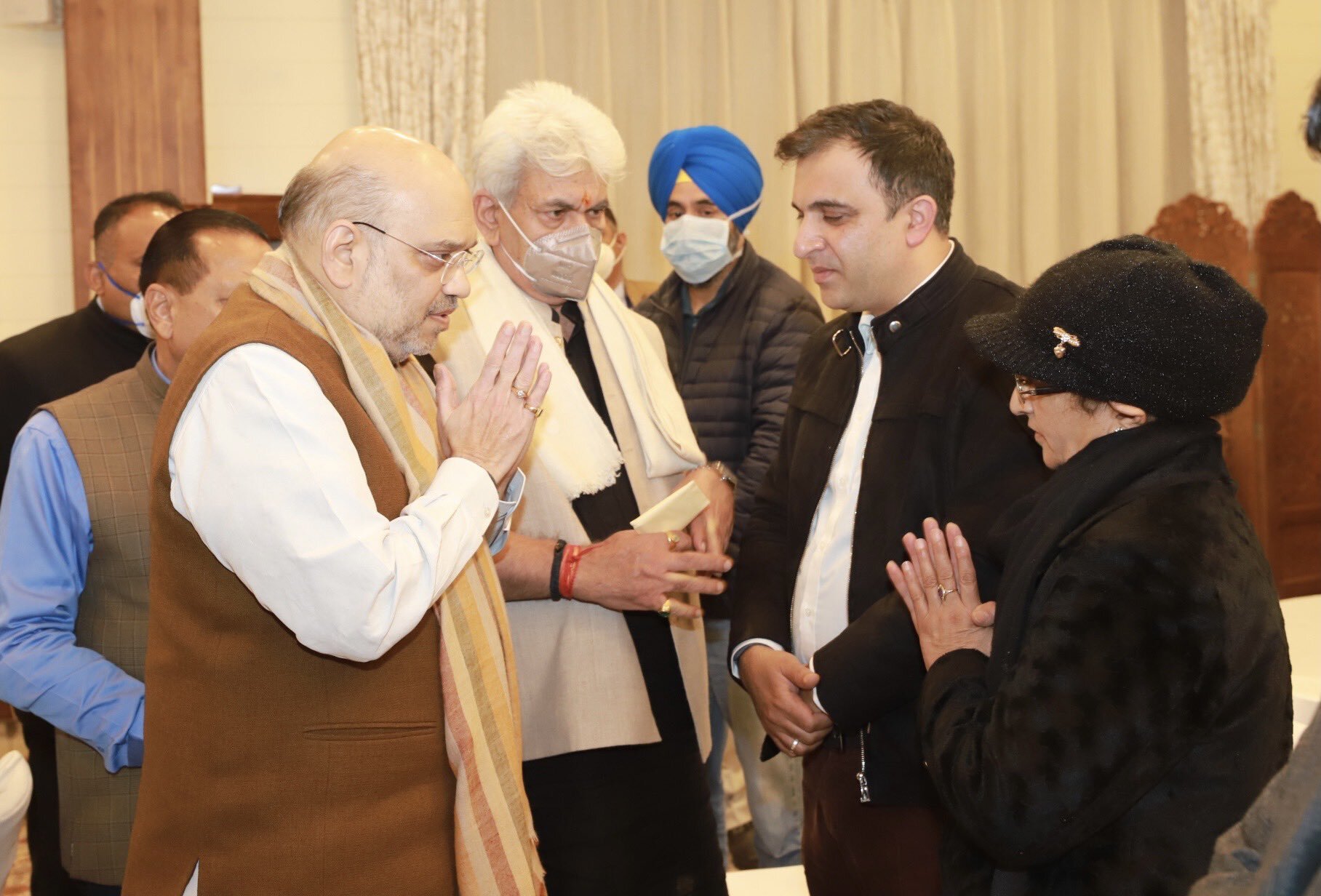
The only thing that the government has been singularly unable to control is the militancy, despite the killing of around 350 militants since August 5, 2019. According to the existing figures, the number of militants continues to hover around 200. If anything, these figures reflect that the militancy in the Valley has gone nowhere following the repeal of Article 370. Over the last two years, the security forces have achieved greater success in the operations against militants and at one time it appeared a distinct possibility that the militancy was on its way out.
But going by the rise and fall of militancy over the past three decades, such a prospect is unlikely to come about. The militancy in Kashmir has often risen from the ashes. Never had it come so close to extinction as by 2013 when the Valley had a little over hundred militants, only a small number of them locals. But from 2014 the number started rising again. In 2018, the most violent year in a decade, 271 militants were killed but it still didn’t make any difference to the ground situation.
Going forward, there is little indication that the militancy would cease. The simultaneous recruitment of the local youth in the militant ranks and the now shrunk infiltration from across the border invariably replenishes the shortfall created by the killings of the militants.
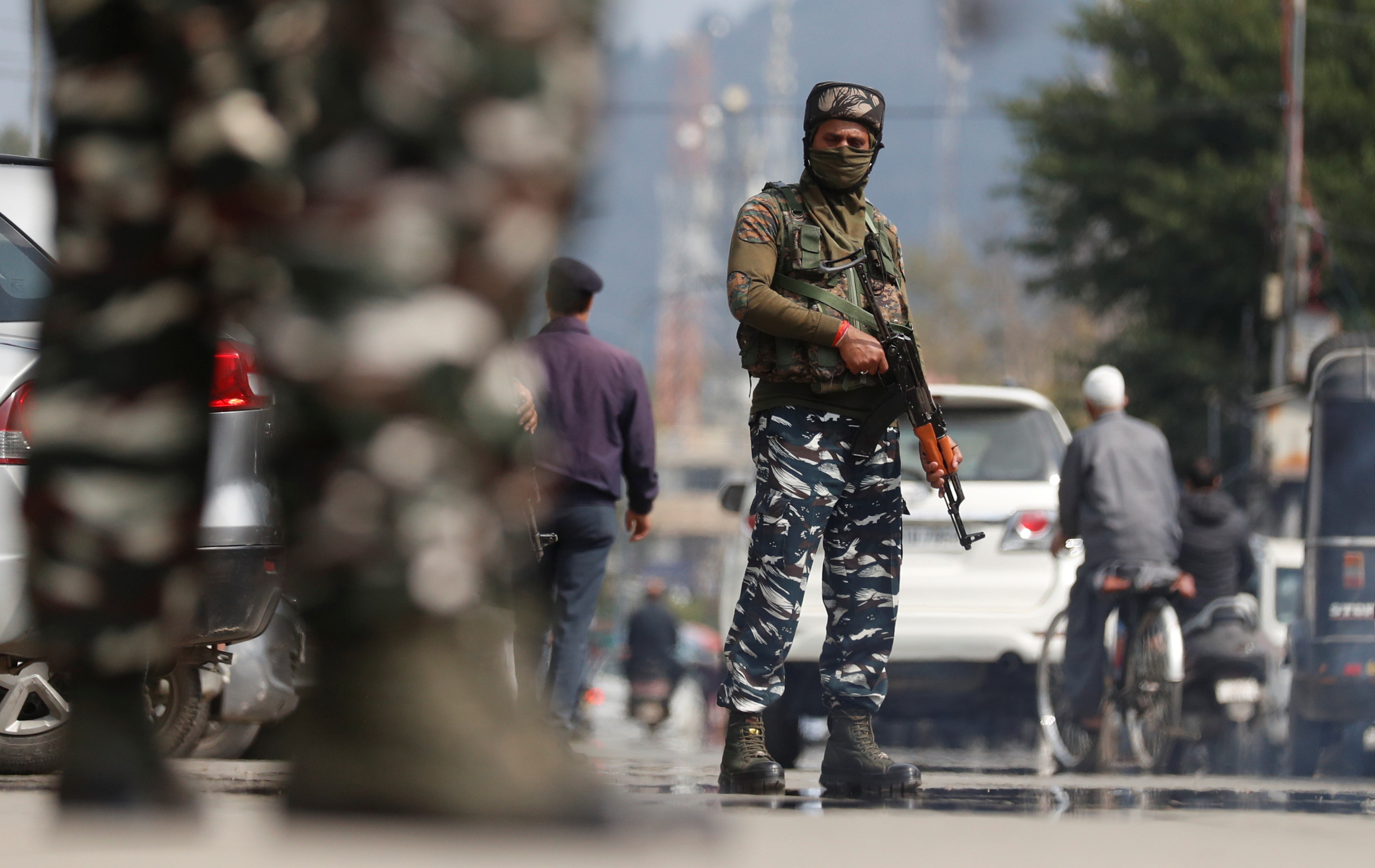
One proof of this is the still ongoing military operation at Poonch forests in Jammu where so far nine security personnel including a junior commissioned officer have been killed. These militants are believed to be from across the border and are still alive. There is thus a clear attempt to expand the challenge of militancy to Jammu. With militants escalating the situation by killing civilians including those from the minority community, the challenge for the security forces has grown several fold.
“This replenishment will continue unless the dynamic that animates the militancy is addressed,” said a political analyst who didn’t want to identify himself. “And this redressal is not in the killing of the militants but in a meaningful political outreach that has been sorely missing in the current climate.”
Fraught climate
The sudden killings of the members of the minority communities have caught security forces unawares. This is the first time after almost over two decades that the killings of this nature have resurfaced. And they have come at a time when J&K is under the direct central rule and the security domination is unprecedented.
Some Kashmiri observers see the killings in the light of the developments of the last two years that are seen as geared to alter the demographic character of the Valley. The paranoia about a perceived hostile centre allegedly conspiring “to dilute Valley’s Muslim majority character” is redrawing the discourse in Valley like never before. It is bringing into full play the issues of land and identity, hitherto more or less dormant elements of the ongoing conflict which operated so far largely along political dimensions. This is pitting Kashmiri Muslims not only against New Delhi but also against Pandits who have their own powerful narrative and seek a dignified return to their motherland insured against a future flight in the event of a resurgence in separatist militancy. Hence, the demand for Pandit-only townships, safeguarded by the security personnel is stoking deep apprehensions among Muslims.
Some of the measures announced by the government include the domicile law that after it was introduced in April 2020 opened up Kashmir to settlement by outsiders. The new law entitles to a domicile status anyone who has stayed in the region for fifteen years. The period is just ten years for central government officials and their children and seven years for students who have done high schooling in the region.
Exacerbating these apprehensions is the recent launch of a portal for time-bound redressal of grievances related to Kashmir migrants’ immovable properties. The objective of the order primarily is to revoke “distress sales” of properties by Kashmiri Pandits since 1990: The buyers of Pandit properties in the 1990s will have to return them at the same price they had paid, if their sellers claim they did so under duress. It has, in turn, created deep resentment among a segment of the population that, in turn, has rubbed off on the majority community already anxious about what they see as a demographic change.
“It is the responsibility of the present to rectify the mistakes of the past. While laying the foundation for a bright future, this is also the time to heal the old wounds,” the Lt. Governor Manoj Sinha told media soon after the launch of the portal. “I request all citizens to support the administration in this effort and set a new example of brotherhood.”
Lt. Governor added that 854 grievances had been received during the trial run period of the portal. In Srinagar alone, 660 complaints were received. “It clearly shows a large number of migrant families were awaiting justice. Now, the time-bound action on complaints will not only restore the faith of people in the system but I believe thousands of families achieve closure, justice and regain their dignity,” Lt Governor Sinha said.
Taliban fallout ?
Some experts see the fresh violence in Kashmir as a result of the Taliban takeover of Afghanistan. This is believed to have shored up the otherwise sagging confidence among the ranks of militants in the Valley.
Soon after the Taliban triumph, Hizbul Mujahideen supremo Syed Salahuddin in an audio statement said that he expected the Taliban to aid Kashmiris. He also expressed the confidence that a similar resistance in Kashmir would help end “occupation by India.” There has, however, been no statements from Jaish or Lashkar leaders so far. In fact, there has hardly been any statement from the leaders of these organizations in the last two years. Nor have the two outfits claimed responsibility for the attacks in Kashmir in this timeframe.
But the conspicuous jump in violence in October including the continuing encounter in Poonch testify to the fact that there has been some morale-boosting of the militants following the return of the Taliban to power in Afghanistan if not some more aid from Pakistan for militants.
“It is still too early to conclude that the fresh violence in Kashmir is the result of the Taliban takeover in Kashmir,” said a police officer. “But we can’t also rule out the fact that the current escalation has followed the Taliban takeover. The situation is likely to become clear in the weeks and months to come.”
Home minister’s visit
Union Home Minister Amit Shah visited J&K for three days on October 23 in the wake of the civilian killings and the Poonch encounter to take stock of the security situation.
It was Shah’s first visit to J&K following the revocation of Article 370.
He along with Lt. Gov Manoj Sinha reviewed the security situation with the security brass in Srinagar.
Later, talking to the representatives of 4,500 youth clubs in J&K that work at panchayat level, Shah refused to acknowledge that there was militancy in Kashmir. He said that terrorism and stone-pelting had disappeared in Kashmir and those who wanted to disrupt peace here would be dealt with an iron hand. As for the development of J&K in the last two years, Shah painted a hunky-dory picture.
“Under the new industrial policy, J&K has received Rs 12,000 crore investment in the past six months compared to a total of Rs 15,000 crore in the past seven years,” Shah said. He added that tourism was also picking up in Kashmir as from January-March this year the number of tourists stood at 1.13 lakh as against 36,000 tourists that visited in 2020.
As for political measures, Shah said that statehood would only follow the ongoing fresh delimitation of J&K and the elections thereafter. And that makes statehood a very distant proposition.
Shah’s visit, however, came as some reassurance for the minorities halting a full-scale exodus. But then only further fortifying the security domination won’t be enough to keep Kashmir calm. The centre can’t do without a meaningful political outreach.








